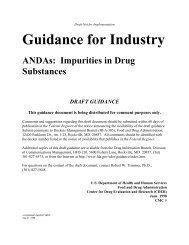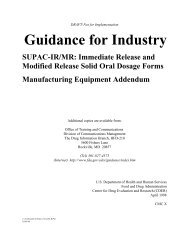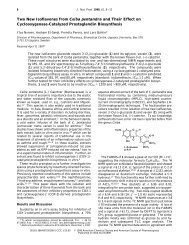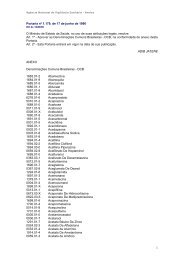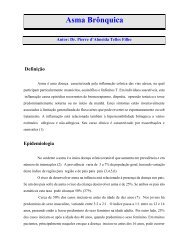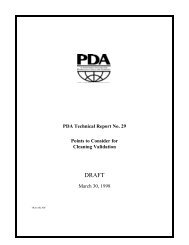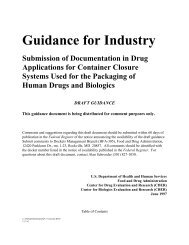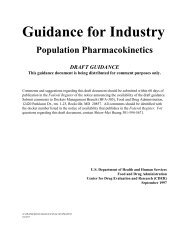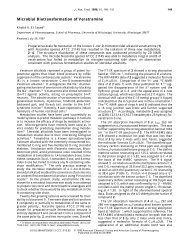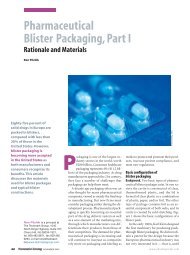Bioanalytical Methods Validation for Human Studies - Pharmanet
Bioanalytical Methods Validation for Human Studies - Pharmanet
Bioanalytical Methods Validation for Human Studies - Pharmanet
Create successful ePaper yourself
Turn your PDF publications into a flip-book with our unique Google optimized e-Paper software.
Draft — Not <strong>for</strong> Implementation<br />
Analysis of drugs and their metabolites in a biological matrix is invariably carried out using<br />
samples spiked with calibration standards and quality control (QC) samples. The quality of the<br />
reference standard used to prepare spiked samples can affect study data. For this reason, an<br />
authenticated analytical reference standard should be used to prepare solutions of known<br />
concentrations. If possible, the reference standard should be identical to the analyte. When this is<br />
not possible, an established chemical <strong>for</strong>m (free base or acid, salt or ester) of known purity can be<br />
used as a surrogate. Three types of reference standards are usually used: (1) certified reference<br />
standards (e.g., USP compendial standards); (2) commercially supplied reference standards<br />
obtained from a reputable commercial source; and/or (3) other materials of documented purity<br />
custom-synthesized by an analytical laboratory or other noncommercial establishment. The<br />
source and lot number, certificates of analyses when available, and/or internally or externally<br />
generated evidence of identity and purity should be furnished <strong>for</strong> each reference standard. A<br />
master standard (a synthetic batch <strong>for</strong> which identity and purity are clearly established and<br />
acceptable) should be maintained <strong>for</strong> each reference standard. All subsequently synthesized<br />
batches are to be compared chromatographically with that master standard. All reference<br />
materials should be checked prior to use to determine if there are significant interfering<br />
chromatographic peaks at the retention time of the analyte and/or the internal standard, using the<br />
analytical procedure to be used in the study.<br />
IV.<br />
PRE-STUDY VALIDATION<br />
Pre-study validation should include analytical method development and documentation.<br />
<strong>Validation</strong> should be per<strong>for</strong>med <strong>for</strong> each biological matrix and <strong>for</strong> each chemical species to be<br />
measured in the biological matrix (Shah 1992, Buick 1990). In addition, the stability of quality<br />
control samples and the analyte in spiked samples should be determined. Typical per<strong>for</strong>mance<br />
parameters that should be assessed during pre-study validation include (1) specificity, (2)<br />
calibration curve and its linearity, (3) precision, accuracy, recovery, (4) quality control samples,<br />
(5) stability of analyte in spiked samples, and (6) acceptance criteria.<br />
A. Specificity<br />
Specificity is the ability of an analytical method to differentiate and quantitate the analyte<br />
in the presence of other constituents in the sample and refers directly to the ability of the<br />
method to produce a response <strong>for</strong> a single analyte (Karnes 1991). For specificity, analyses<br />
of blank samples of the appropriate biological matrix (plasma, urine, or other matrix)<br />
should be obtained from six individuals under controlled conditions, with reference to time<br />
of day, food ingestion, and other factors considered important in the intended study. Each<br />
blank sample should be tested <strong>for</strong> interference using the proposed extraction procedure<br />
and chromatographic or spectroscopic conditions. The results should be compared to<br />
j:\!guidance\2578dft.wpd<br />
12/14/98 3



